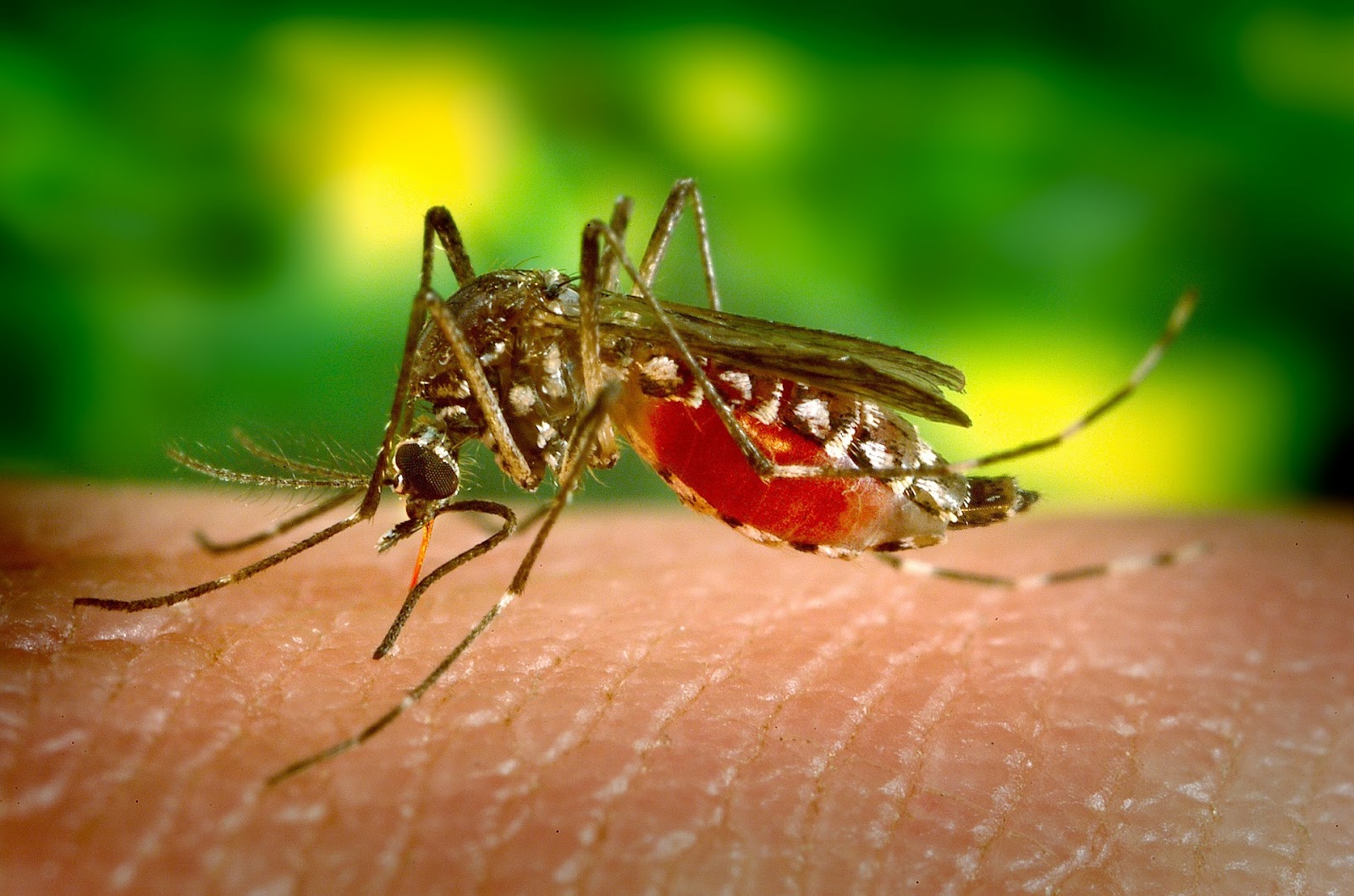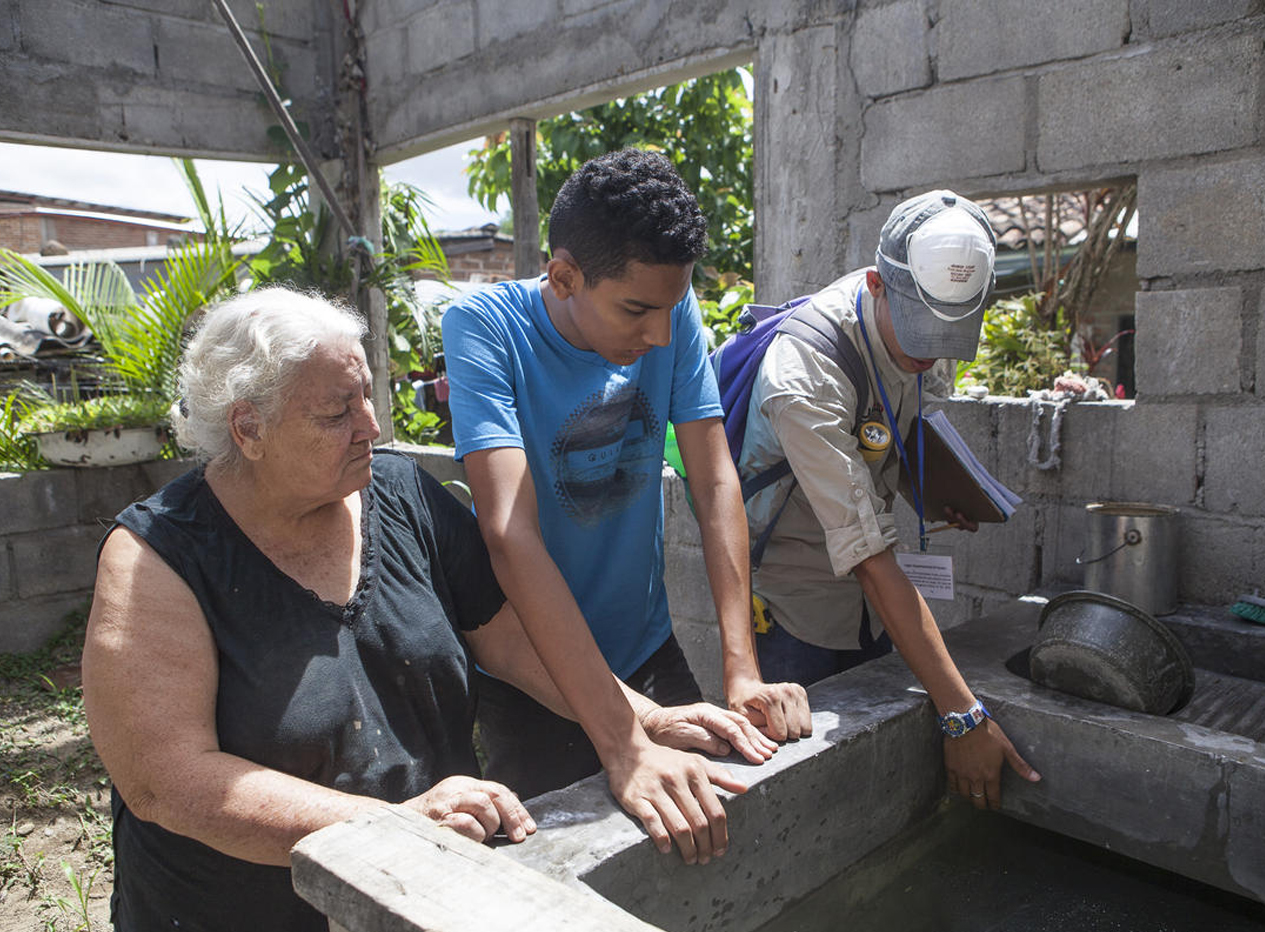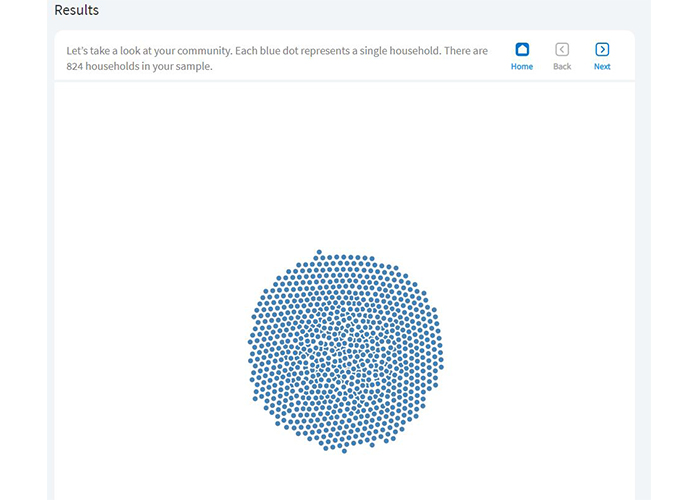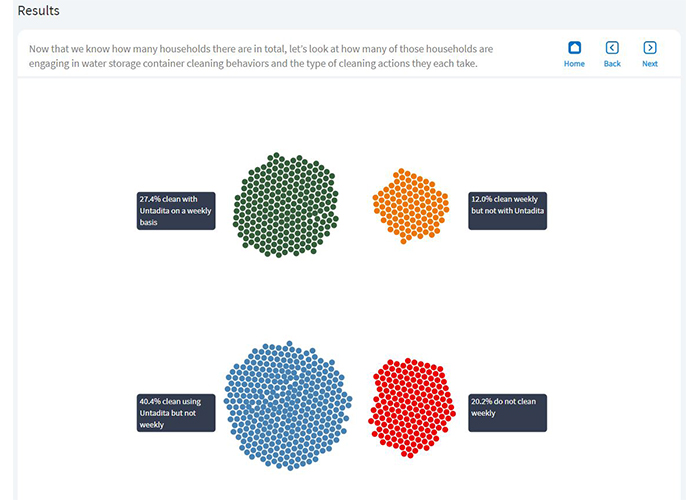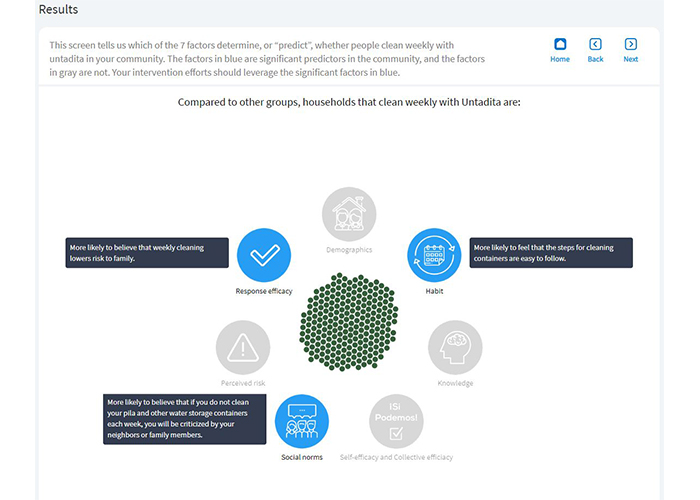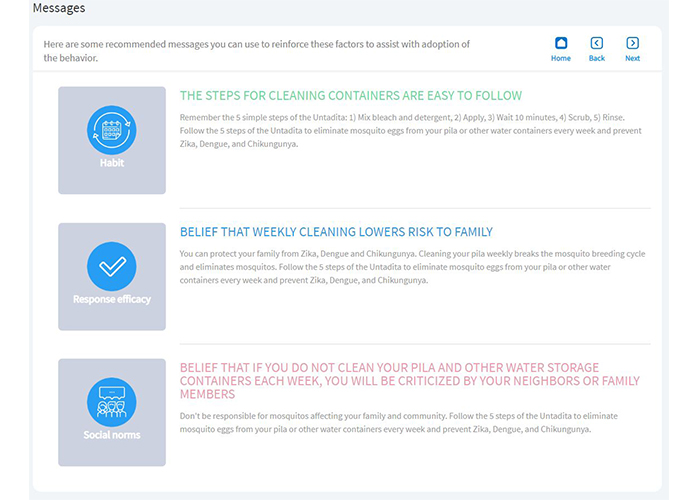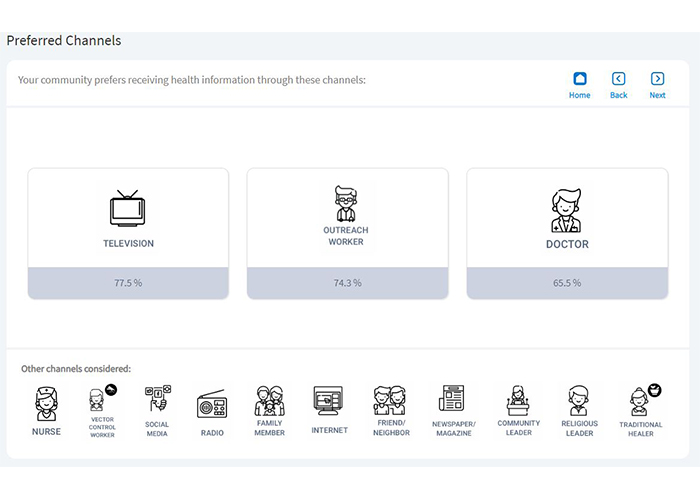The R-SHOT is programmed to analyze data quickly, identify behavioral determinants that are most strongly related to the desired outcome behavior in a particular community and provide recommendations about strategic messaging that is most likely to result in behavior change. In Honduras, the outcome behavior is “Untadita,” a regular ovicidal practice for household water storage containers that, when done correctly, reduces the breeding of Aedes mosquitoes.
The R-SHOT consists of three elements:
- A theory-based behavior change and habit formation survey, administered using a digital tablet, to gather data on 25 known drivers plus common demographic variables
- A predictive online algorithm to automate multiple logistic regression analysis of the data from the electronic survey
- A digital dashboard to display the results of the analysis and provide strategic recommendations for a behavior change communication program
Theory informed
Theories and constructs used to identify relevant drivers of behavior and habit include Ideation (an integrated psychosocial model that combines cognitive, emotional and social variables that predicts behavioral outcomes) and a model of Habit Formation (derived from Behavioral Economics and theories of unconscious decision-making that include framing, situational cues, incentives and other variables).
The R-SHOT applies an algorithm developed by the Johns Hopkins Center for Communication Programs and Catalyst Behavioral Sciences to predict the most significant drivers of routine ovicidal cleaning of water storage containers with a well known and effective practice called the Untadita method. For the Untadita method to be effective, it must be applied to water storage containers on a weekly basis in order to break the life cycle of the Aedes aegypti mosquito.

